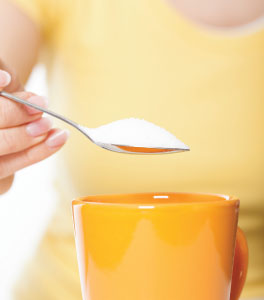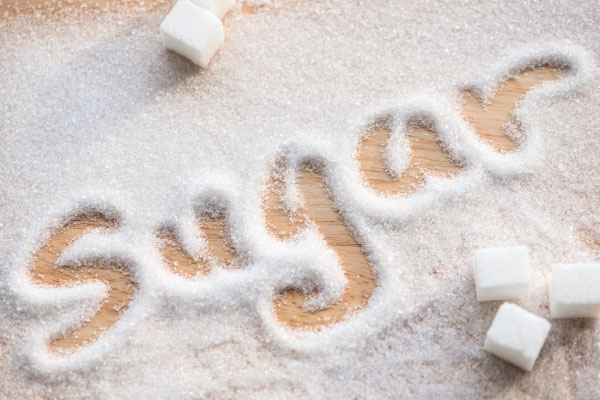It’s in your energy bar and your kids’ candy floss. And of late, has earned itself a bad reputation. Behnaz Sanjana turns the spotlight on the devil called sugar, making it, well, not so sweet.
As you rip open that sweet treat, your heart beats a tad faster. Your eyes become larger and your breath shallower. You anticipate pure pleasure and, when it hits your taste buds, you feel a rush of sweet satisfaction.
The story, however, is hardly delightful once that bar of chocolate or doughnut reaches your insides. Read on to know how and why.
The Real Deal
Dr Bassam Hana, consultant in endocrinology diabetes and metabolic disorders at the Gulf Diabetes Specialist Centre, says the human body needs sugar to convert into energy. Glucose is the sugar circulating in our bloodstream, and is either derived from food or produced by the liver during the night or after meals.
The sugar that we add to food is sucrose.
“It is refined from natural sources (like beetroot or sugarcane) and comprises two simple sugars: glucose and fructose. This is what we buy off the shelves in the form of white or brown sugar. Contrary to popular belief, there is no difference between the two, except the colour!”, he says.
The digestive tract transforms all the sweet stuff you munch on into simple sugar, which is transported into the bloodstream to reach the organs that need it to produce energy (brain, muscles, etc) and the surplus is stocked in the liver to use when needed. All sugar that we don’t need to produce energy will be transformed to fat, eventually leading to obesity. Of course, this also depends on the insulin in your body.
Researchers say that after you’ve wolfed down a sugar-laden treat, your brain resembles the mind of a drug addict. The sudden spike in dopamine levels reinforces the need for more, causing even more sweet damage.
We often find ourselves reaching for that cupcake by mid-morning. “That is due to hypoglycaemia, aka low blood sugar levels,” says Dr Hana. If you find yourself needing a sugar fix way too often, you could blame it on genetics. This is true especially in the relatives of diabetic patients. It is also common with nervous individuals, smokers and caffeine guzzlers. Or even due to overstimulation of insulin secretion if you’ve gorged on a sugary breakfast.
Dr Hana suggests having a wholesome morning meal, replacing jams and pastries with complex sugar (what is called slow sugar) like starch – whole wheat bread, oatmeal, beans, brown rice, brown pasta etc — and complementing it with vegetables and proteins.
Sugar, Cholesterol and Cancer
 It’s well known that high sugar consumption leads to diabetes, which is a global epidemic today. But new data finds sugar is the culprit behind obesity, cholesterol and heart disease, too.
It’s well known that high sugar consumption leads to diabetes, which is a global epidemic today. But new data finds sugar is the culprit behind obesity, cholesterol and heart disease, too.
“Excess consumption of sugar is linked to obesity and this association begins in childhood,” says Dr Sunil Rao, specialist in internal medicine at the Bahrain Specialist Hospital. It is thus wise to think twice before we hand our children sugar bombs several times a day. Refined sugar is just nutritionally empty calories. They do not contribute to your wellbeing, but leave behind a burgeoning waistline.
“Observational data suggest that increased intake of sugar amplifies the risk of heart disease, independent of other risk factors.
Also, dietary sugar is inversely related to the levels of good or high-density cholesterol (HDL). Reducing sugar intake will increase this ‘good’ cholesterol level. Reducing sugar intake will also reduce triglyceride levels in
the blood,” says Dr Rao.
There is a lot written on the link between sugar and cancer. Dr Rao maintains that: “Eating sugar itself does not cause any cancers. However, excess calories from sugar can lead to unhealthy weight gain and obesity. It is this obesity that is a risk factor for certain cancers, such as breast and colon.”
Being Sugar Savvy
OK, so the verdict is that sugar is sweet venom. But how much is too much? Nada Jawahery, dietician at the Royal Bahrain Hospital, says: “A person must consume no more than 15 per cent of their calories from added sugar.” To elaborate, on an average consumption of 2,000 calories per day, 300 calories from added sugars is the limit. That translates to an allowance of around 20 teaspoons of sugar per day.
If you think you’re well within this limit, think again. There are seemingly innocent foods that have sugars disguised within. “Fruit yogurts, granola bars and some wholegrain cereals have high amounts of sugar,” Nada explains. And beware, a 12-ounce can of Coke contains 9.3 teaspoons of sugar – nearly half of the maximum allowance.
Reading the labels behind packaged edibles (like readymade sauces and dressings) might make you want to ditch their frequent use. Remember that sugar goes by many names – corn syrup, high-fructose corn syrup, fruit juice concentrate, maltose, dextrose, sucrose, etc. And that is probably why the American Heart Association restricts the sugar you manually add to your food to six teaspoons only.
Have small meals frequently to prevent dips in blood sugar. It helps to be partial to the ‘good’ sugars such as lactose, fructose and glucose, which can be found in foods such as honey, milk, apples and watermelon. These sugars provide energy.
“If you must, satisfy your sweet tooth with wholesome, homemade baked products, made with sweetening ingredients that have vitamins and minerals, such as molasses and honey, rather than artificially sweetened food,” concludes Nada.





































